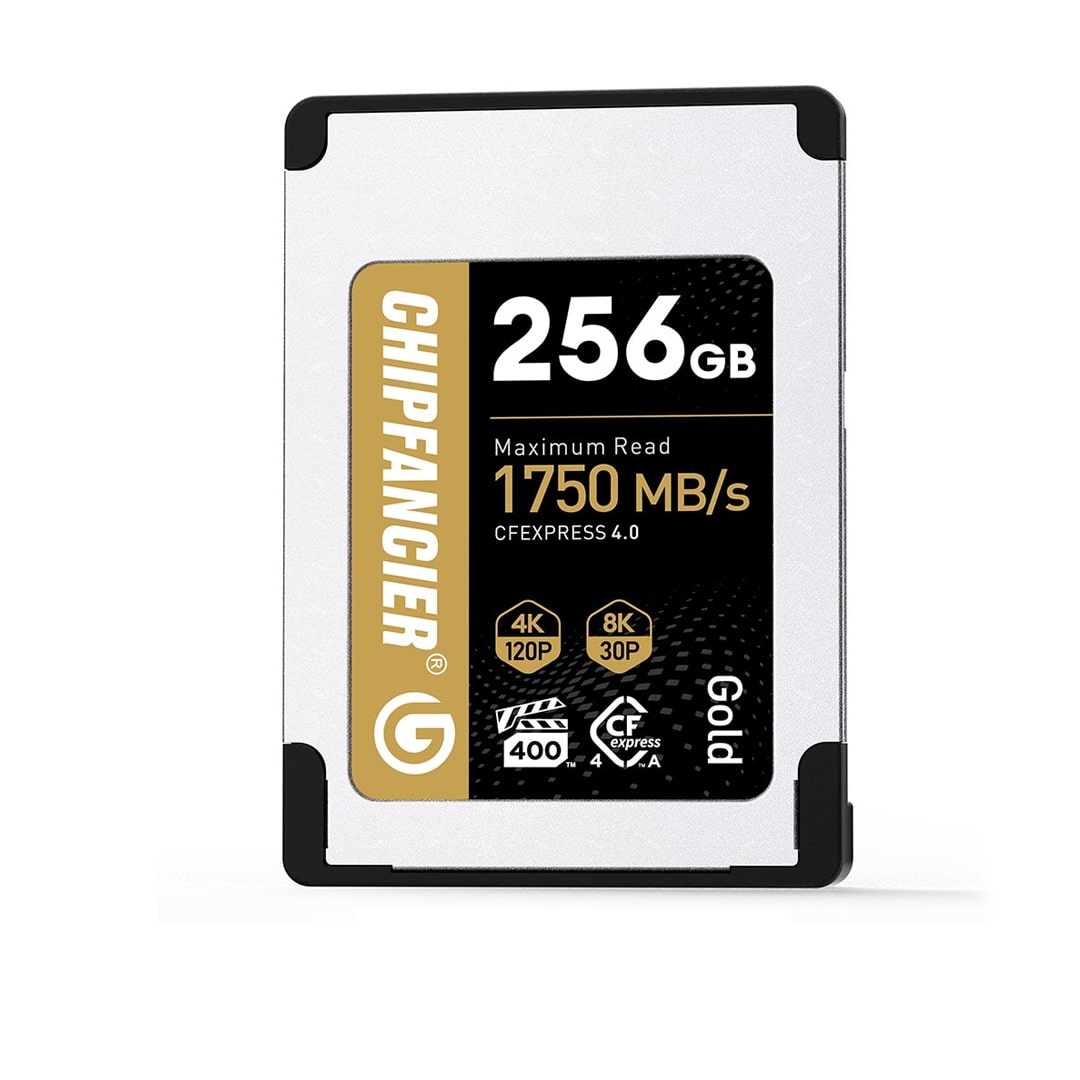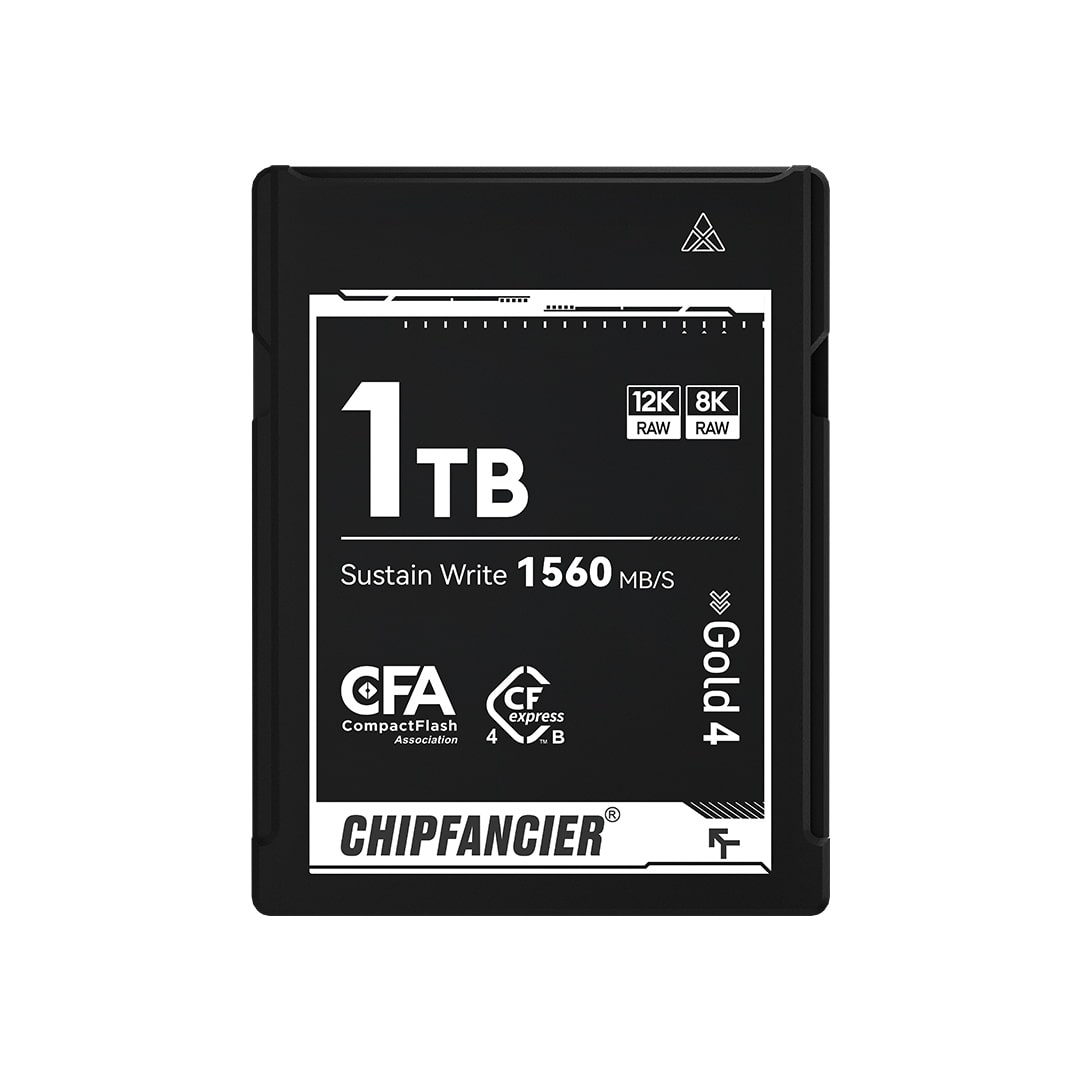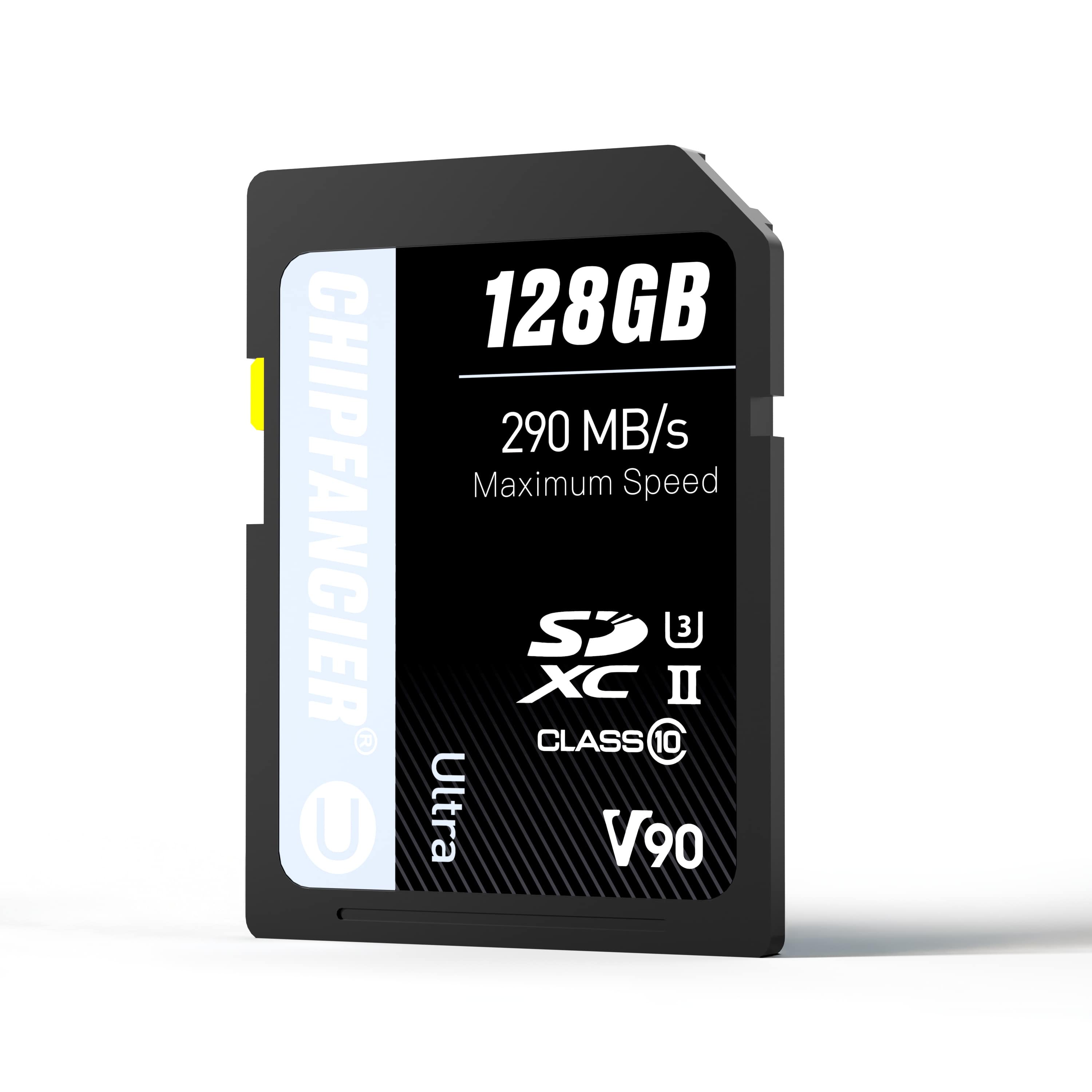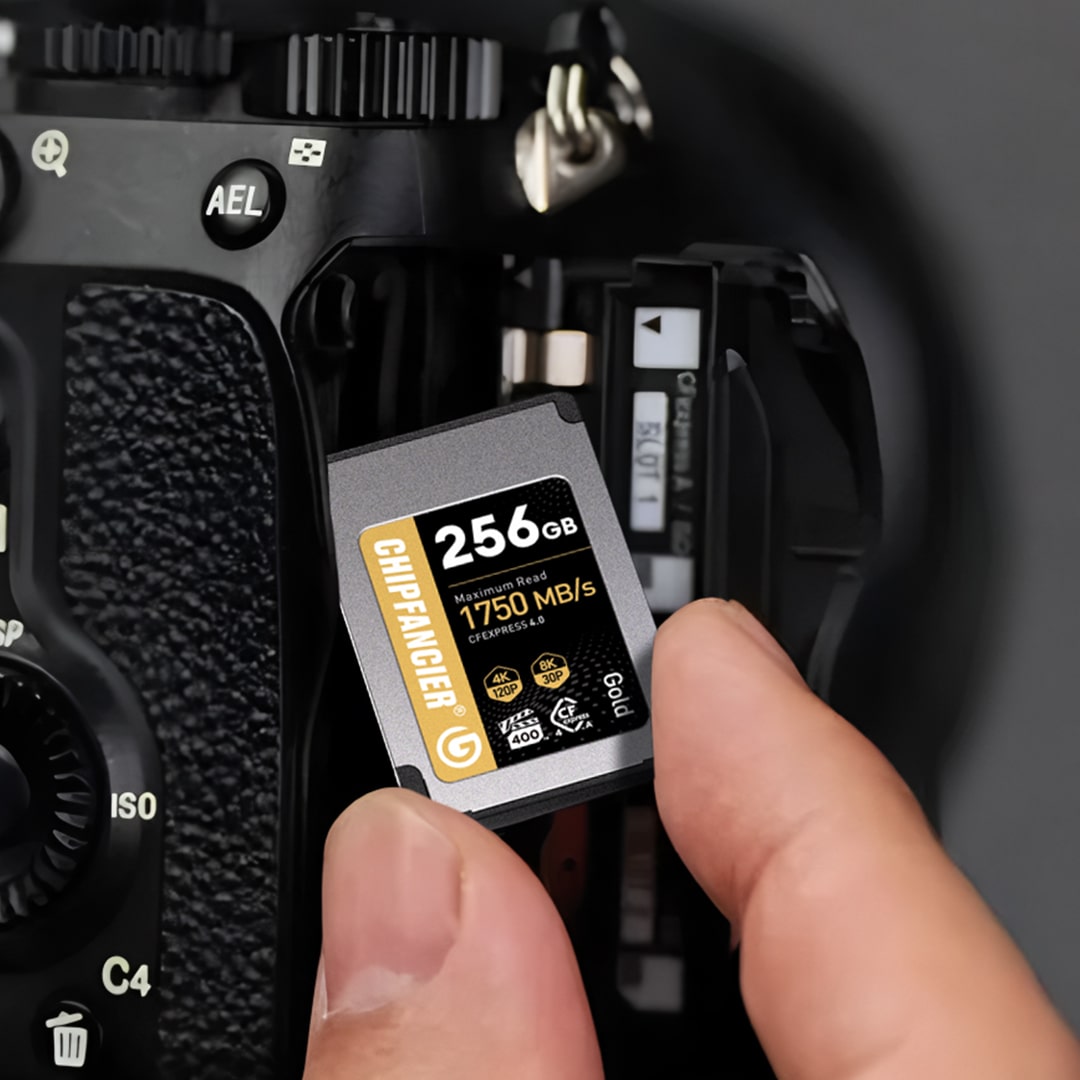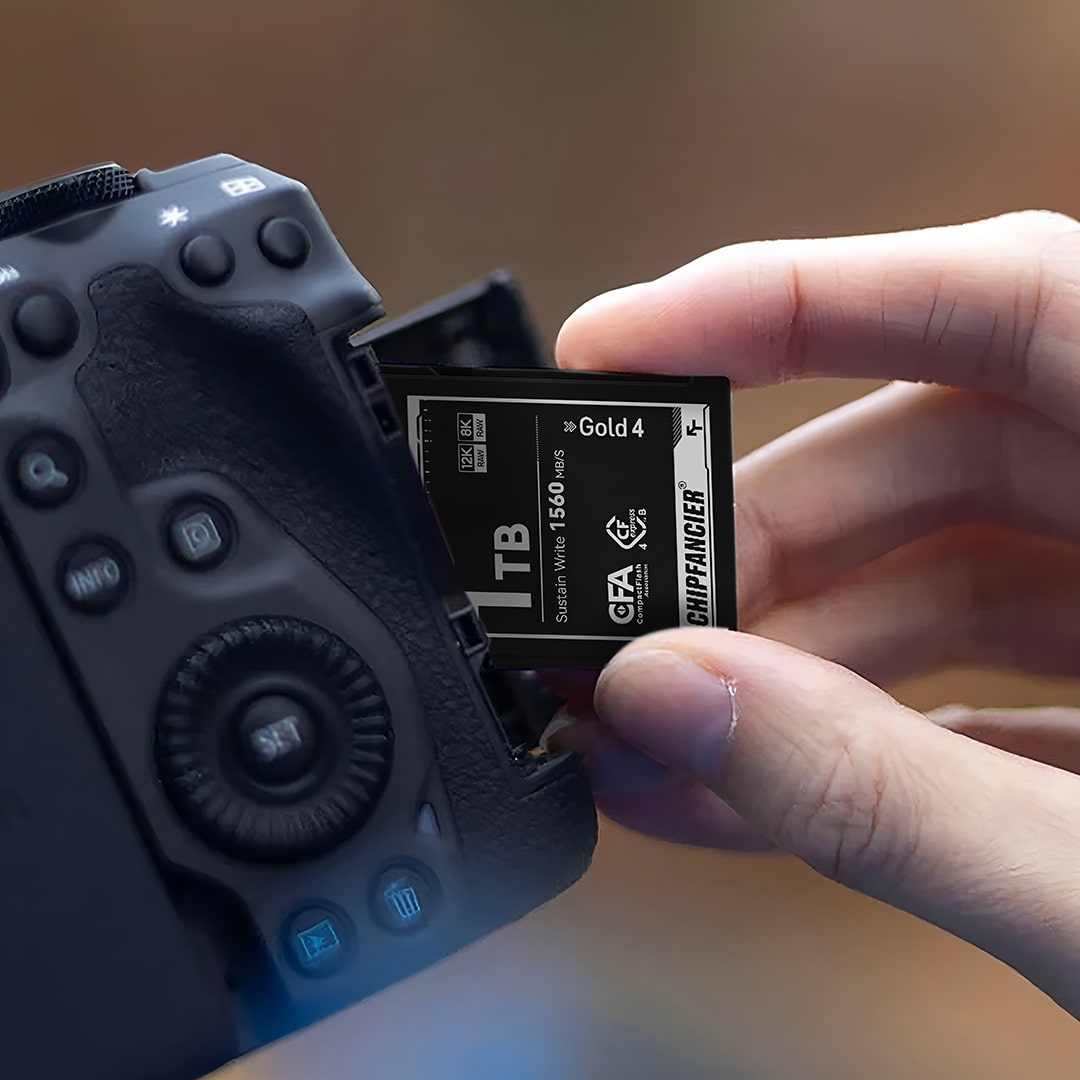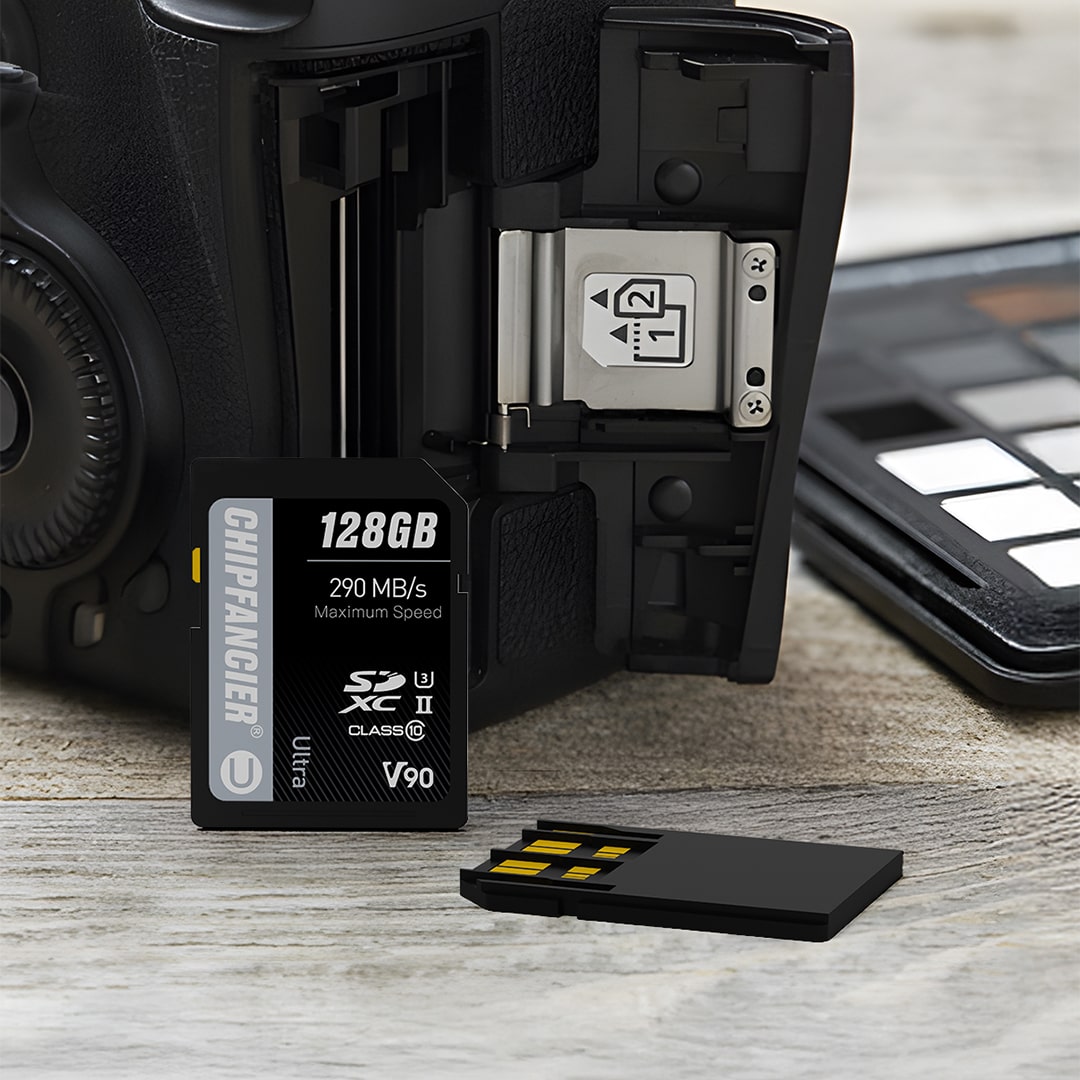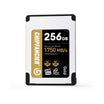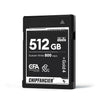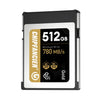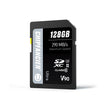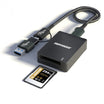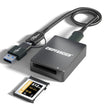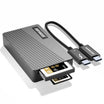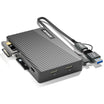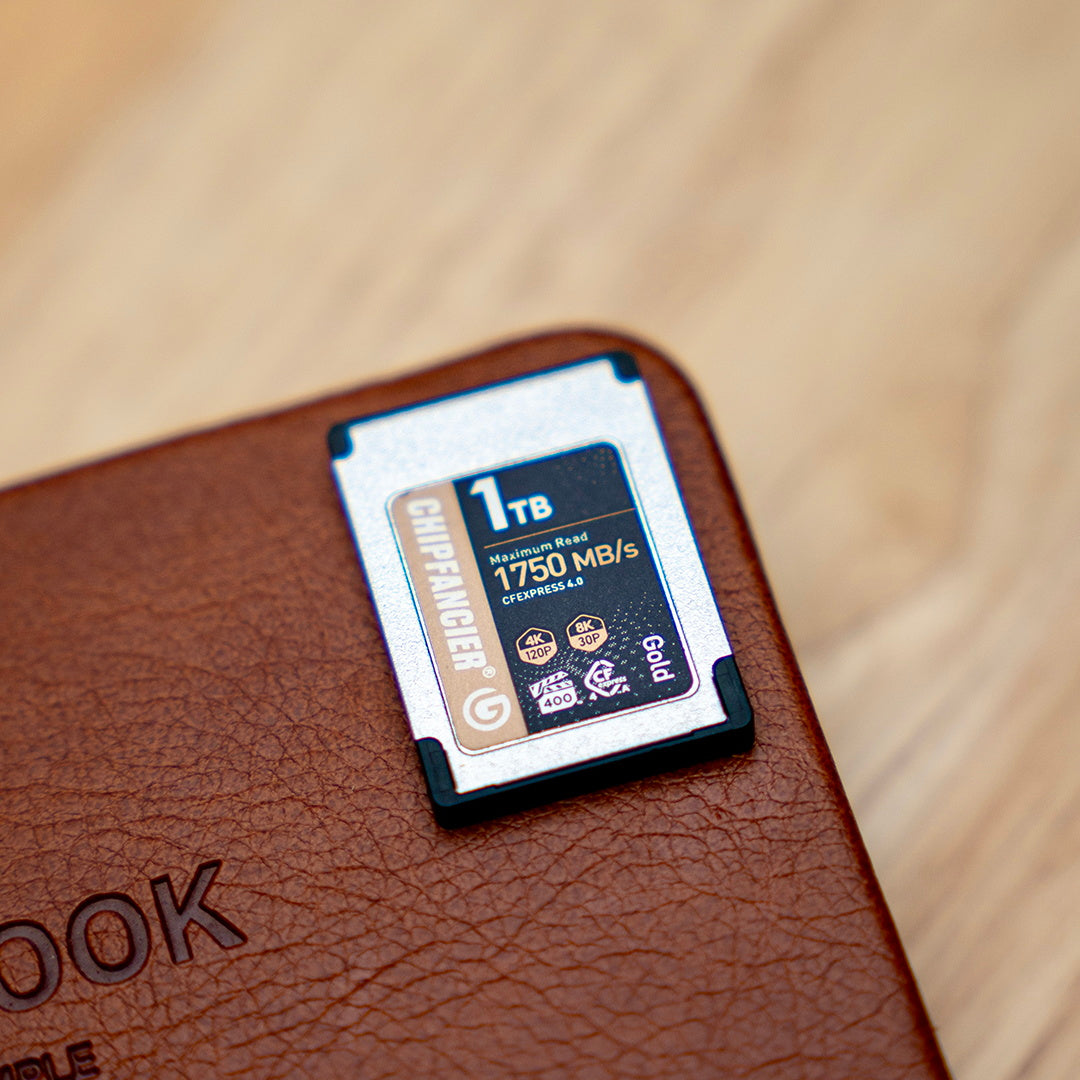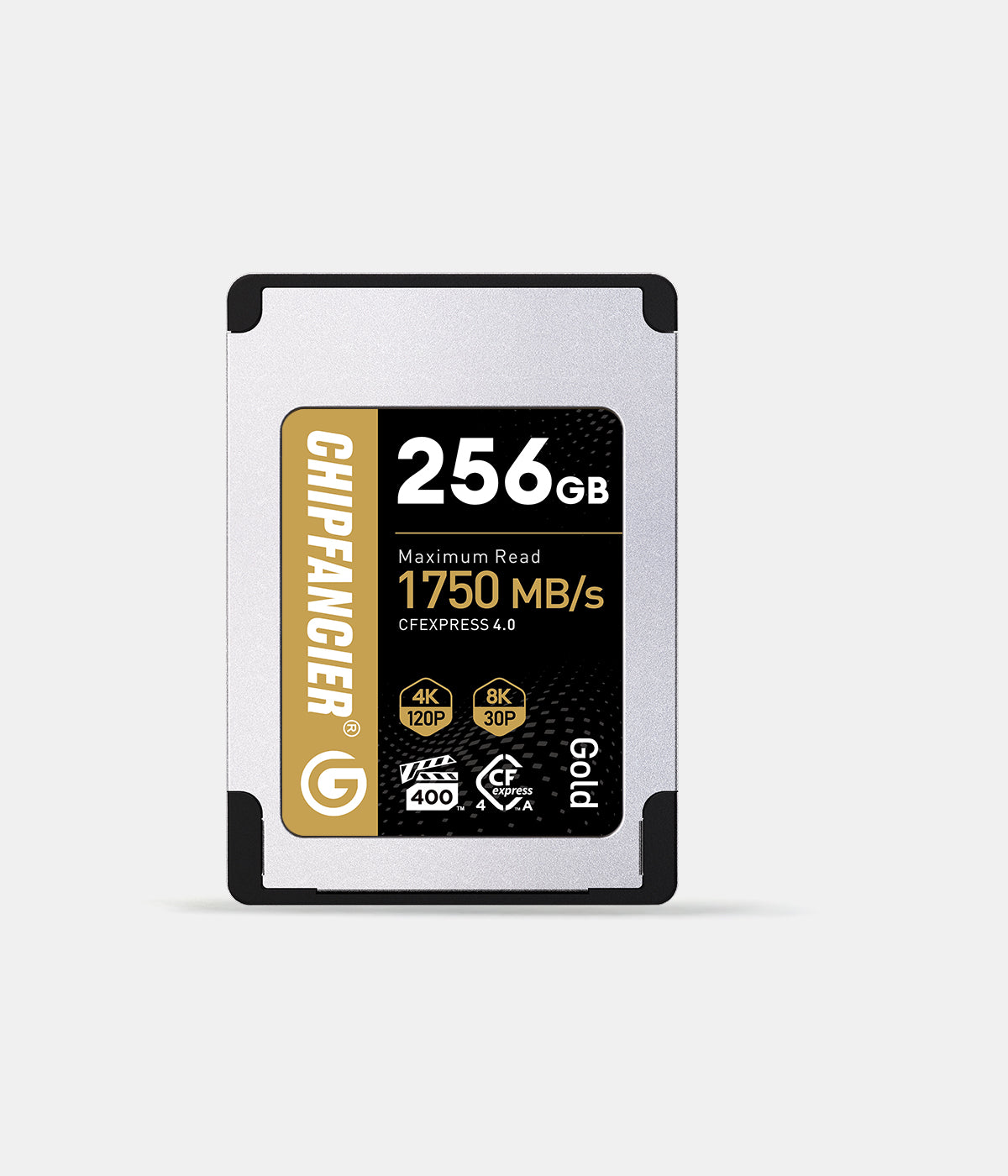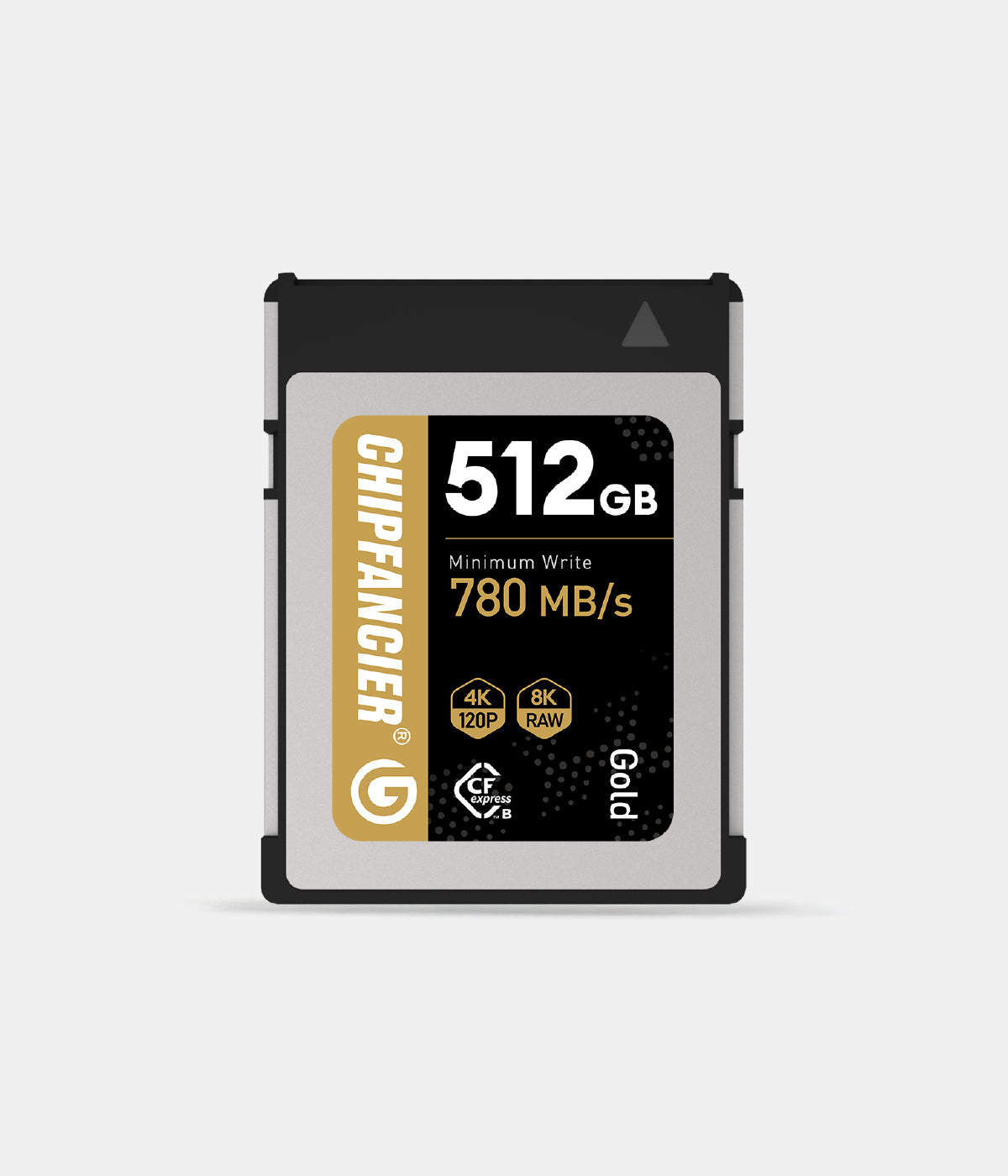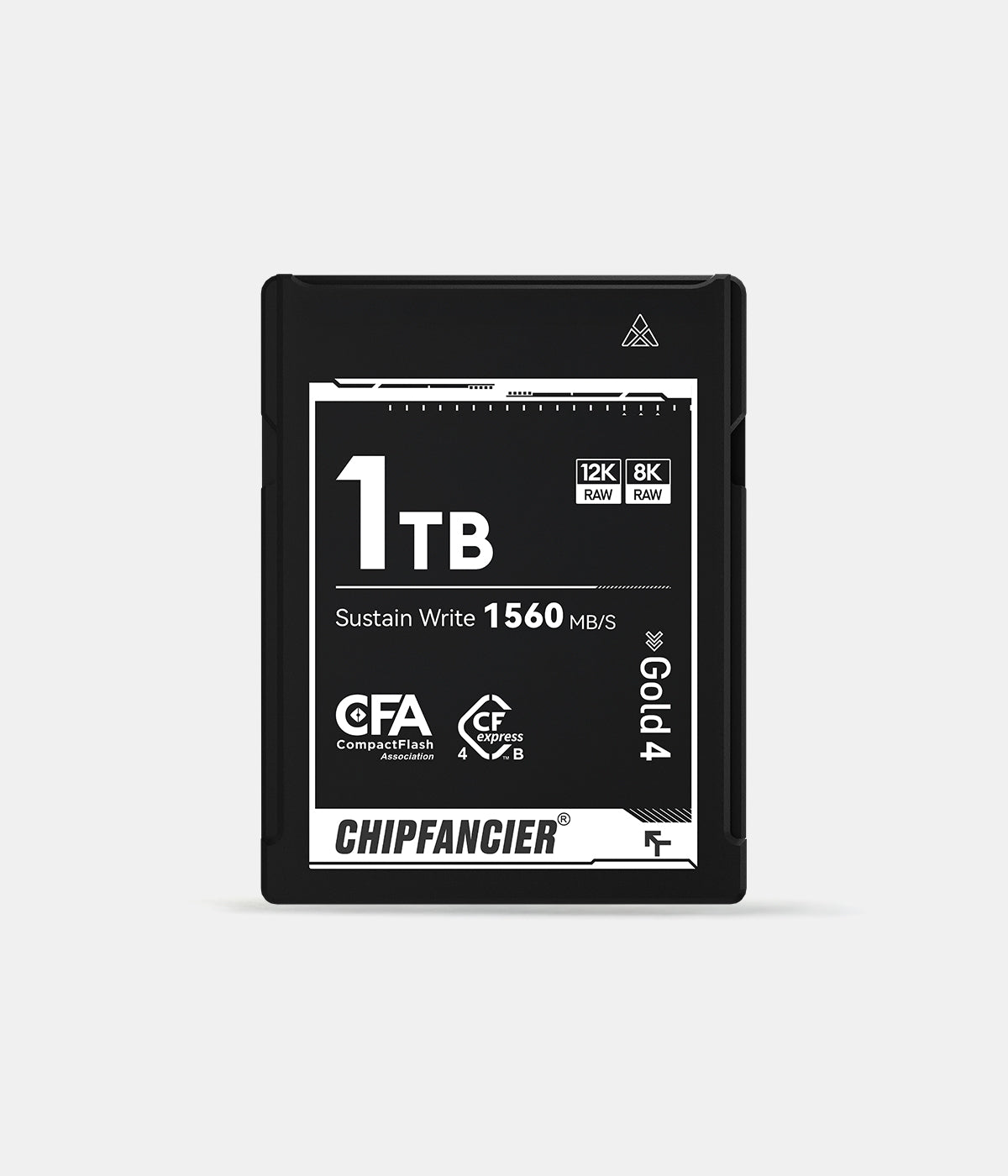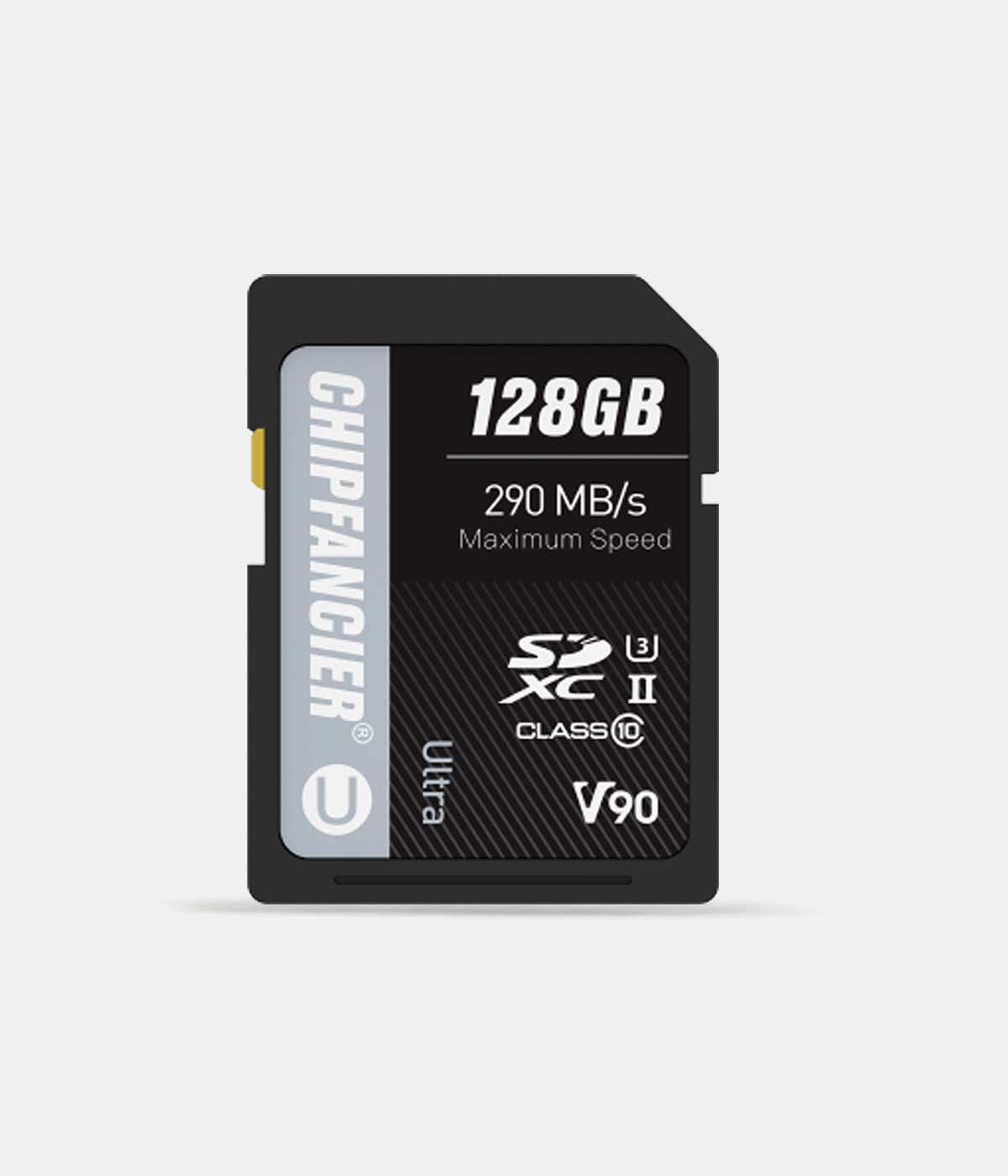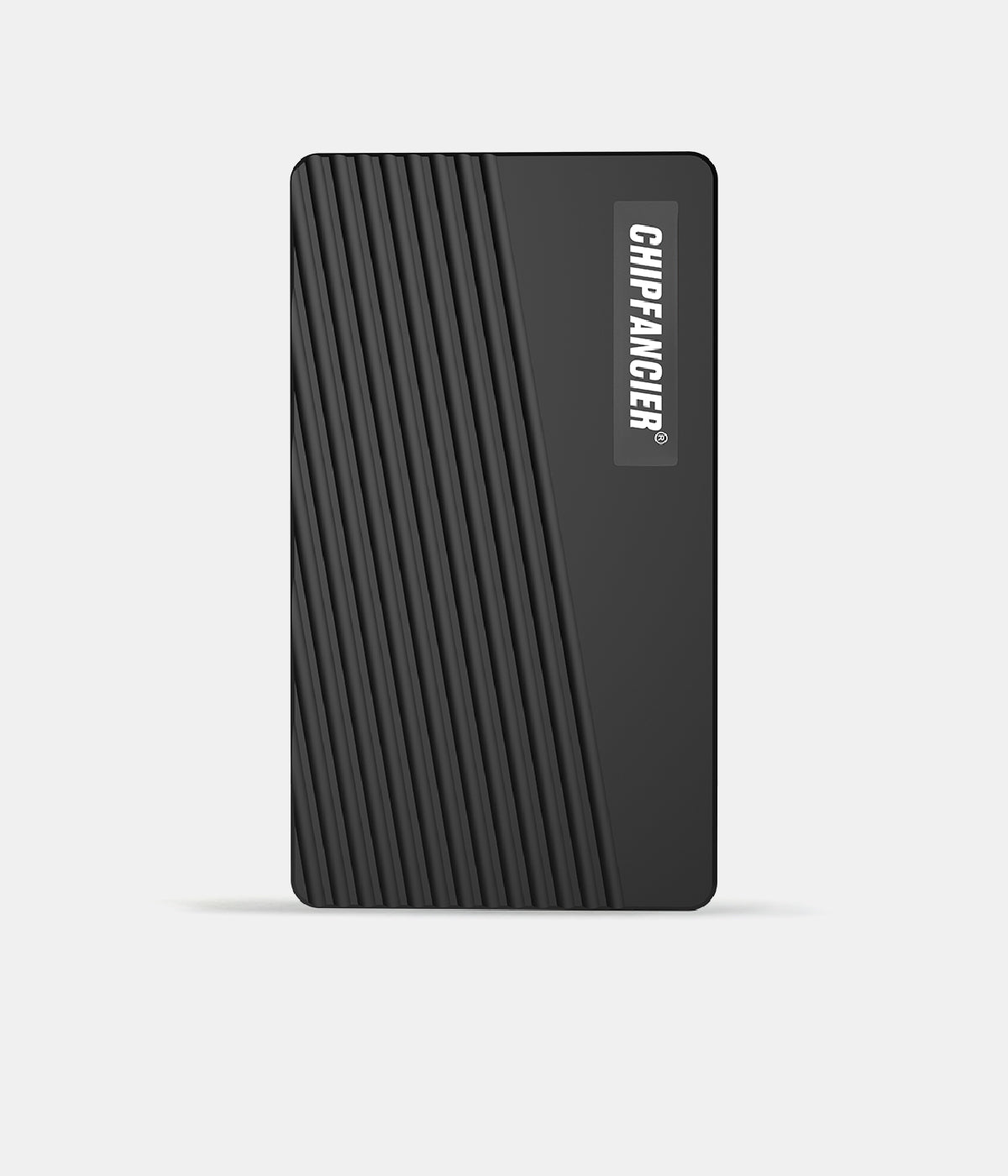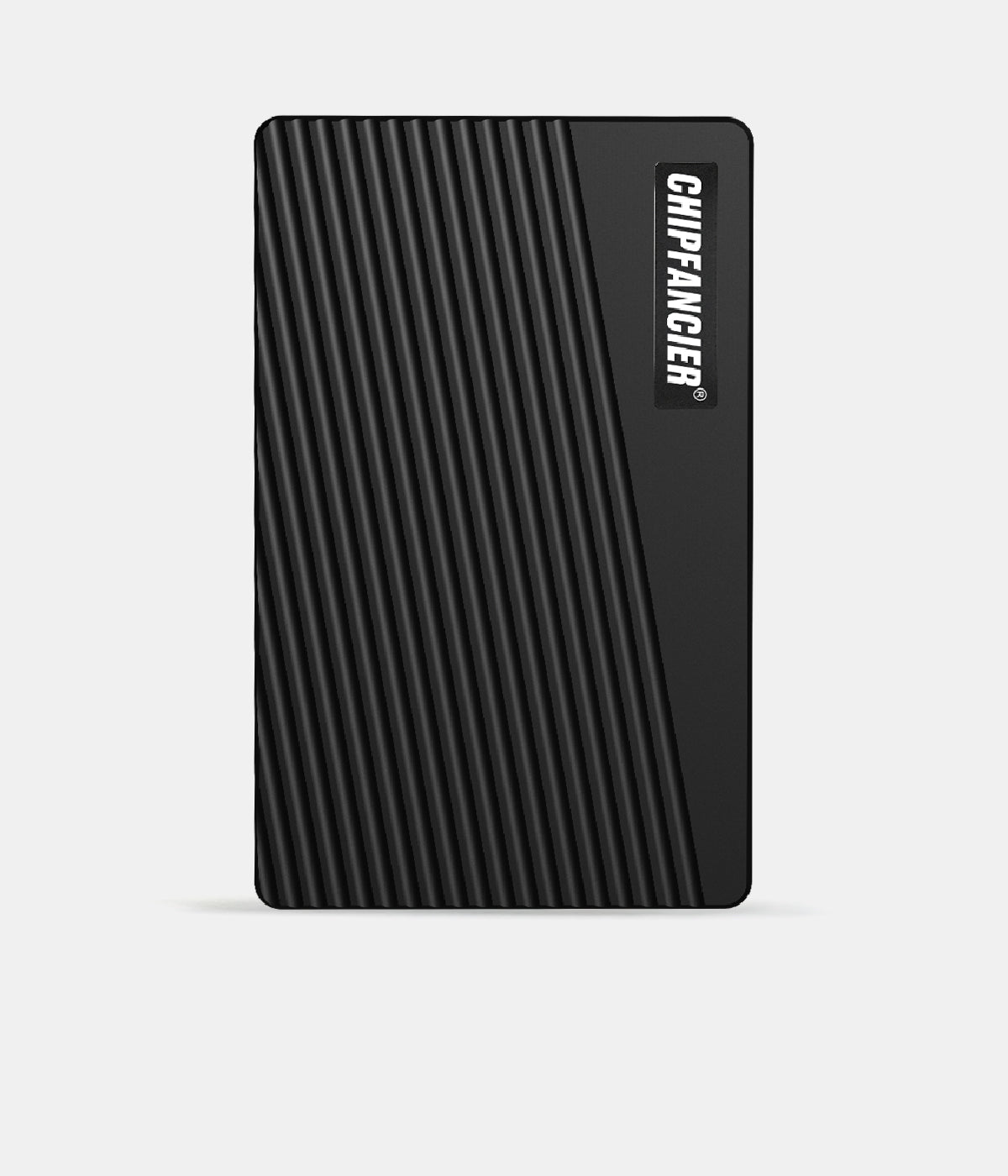When choosing a professional memory card, it is common to see technical symbols such as CFA 4.0, CFB 4.0, CFB 2.0, or SDXC. These markings may look confusing at first, but they provide essential information about speed, performance, and compatibility. By understanding them, you can be sure to select the right card for your camera and workflow.
A Complete Guide to Memory Card Markings
- CFexpress Type A 4.0 Memory Card
CFexpress cards are the newest standard released by the CompactFlash Association. They deliver extremely high read and write speeds, making them ideal for 8K video recording, RAW burst photography, and other data-intensive workflows. Different versions, such as CFA 2.0 and CFA 4.0, represent updates in speed, efficiency, and compatibility with the latest generation of professional cameras.
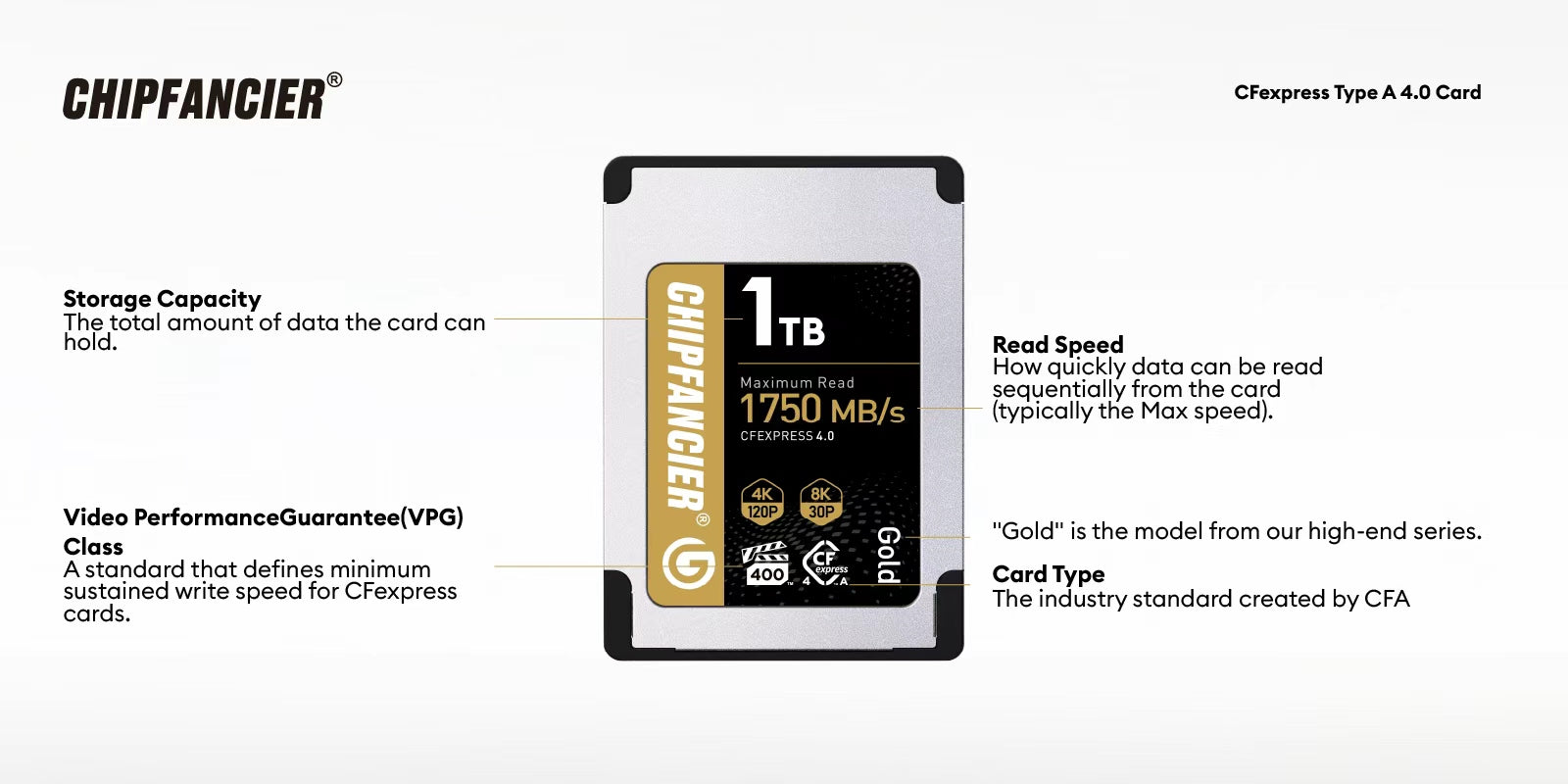
2. CFexpress Type B 2.0/4.0 Memory Card
CFast cards, referred to as CFB, are an established professional standard widely used in cinema, broadcast, and photography. Versions such as CFB 2.0 and CFB 4.0 indicate performance improvements across generations, ensuring faster and more reliable data transfer. While CFexpress has become the latest mainstream choice, many professional systems, including Canon Cinema EOS and ARRI cameras, continue to rely on CFast cards for their stability and proven performance.
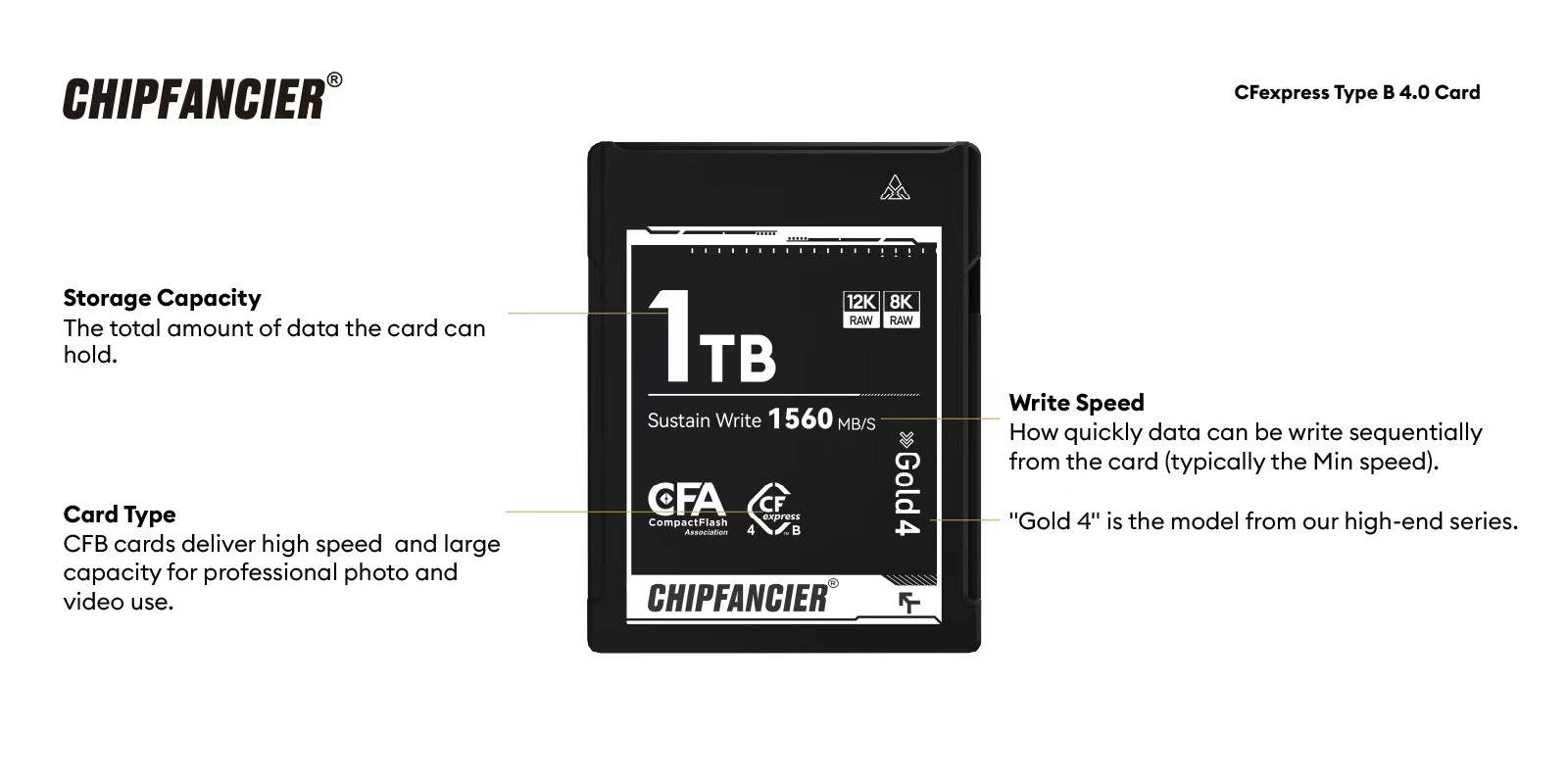
3. SDXC V90 Memory Card
SD cards are the most universal type of memory card, found in everything from consumer cameras to professional gear. They come in multiple formats such as SDHC, SDXC, and SDUC, each representing different capacity ranges. Performance levels are defined by speed classes (C, UHS, V) and application classes (A1, A2). For a more detailed breakdown of these symbols and what they mean, you can view our introduction to SD card symbols.
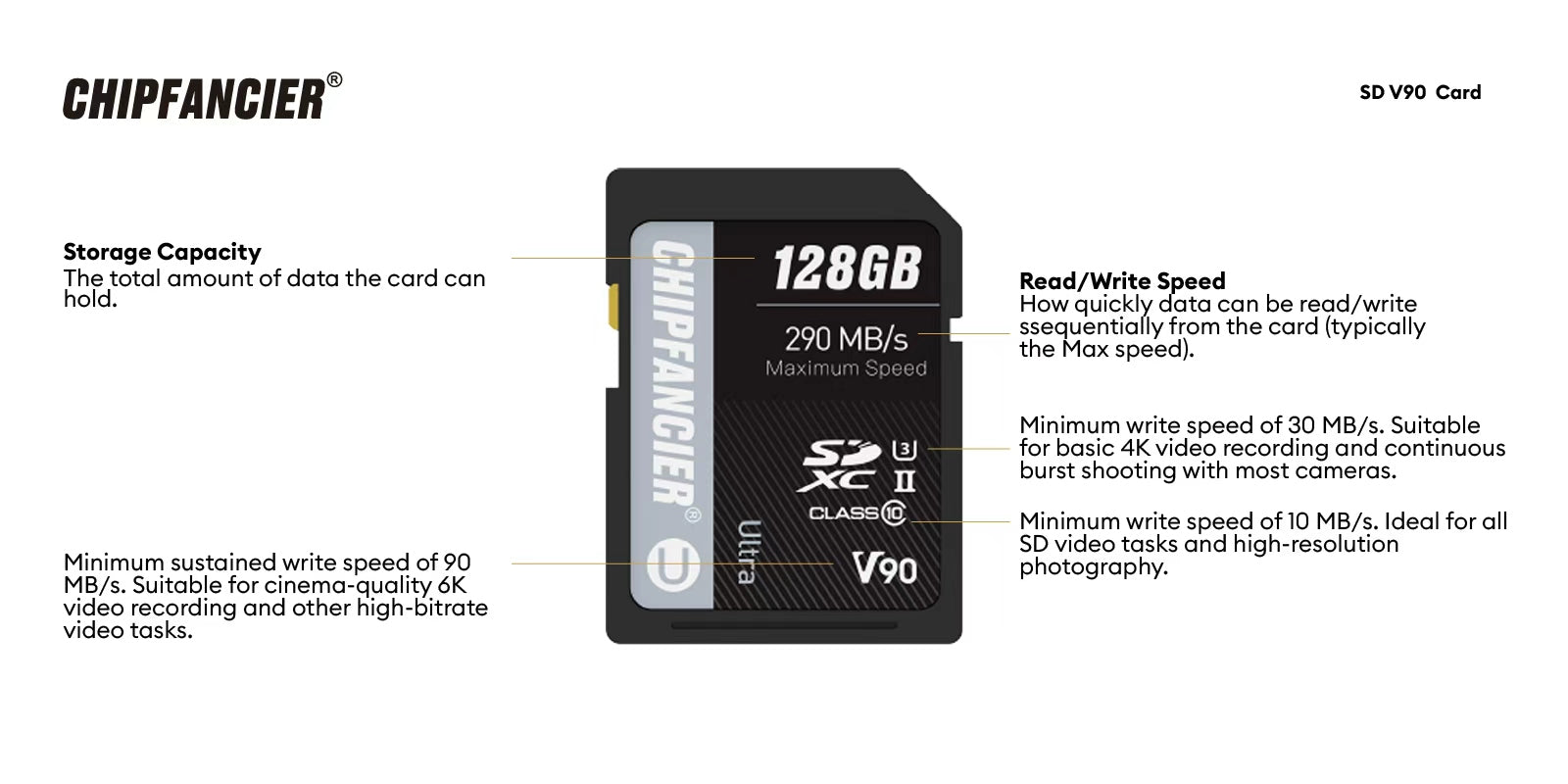
Golden Fingers on CFexpress Cards
The golden fingers on the back of CFexpress cards are the critical interface that connects the card to your camera or card reader. Unlike standard SD cards, CFexpress cards use a PCIe-based design, and the structure of their golden fingers directly determines both compatibility and performance.
Chipfancier CFexpress Type A (CFA 4.0) cards feature a single-row connector with fewer pins, designed for compact form factors such as Sony’s FX3, FX6, and A1 cameras. Despite their smaller size, the golden fingers are optimized for PCIe Gen4 ×1 lanes, allowing high-speed transfers up to 1750 MB/s while maintaining stability.
Chipfancier CFexpress Type B (CFB 2.0 and CFB 4.0) cards are larger and equipped with a dual-row golden finger design that provides more contact points. This double-row interface enables PCIe Gen3 ×2 (in CFB 2.0) or PCIe Gen4 ×2 (in CFB 4.0), offering much higher bandwidth. The result is faster read and write speeds, making these cards especially suitable for 8K RAW video and high-speed continuous photography.
The durability of these golden fingers is equally important. They are usually gold-plated to resist oxidation and wear, ensuring reliable performance even after thousands of insertions. For professional creators, this means stable data transfer, reduced risk of errors, and longer card lifespan.
In summary, the golden fingers on CFA 4.0, CFB 4.0, and CFB 2.0 cards are more than just connectors — they are the key to unlocking next-generation speed and performance in professional imaging.
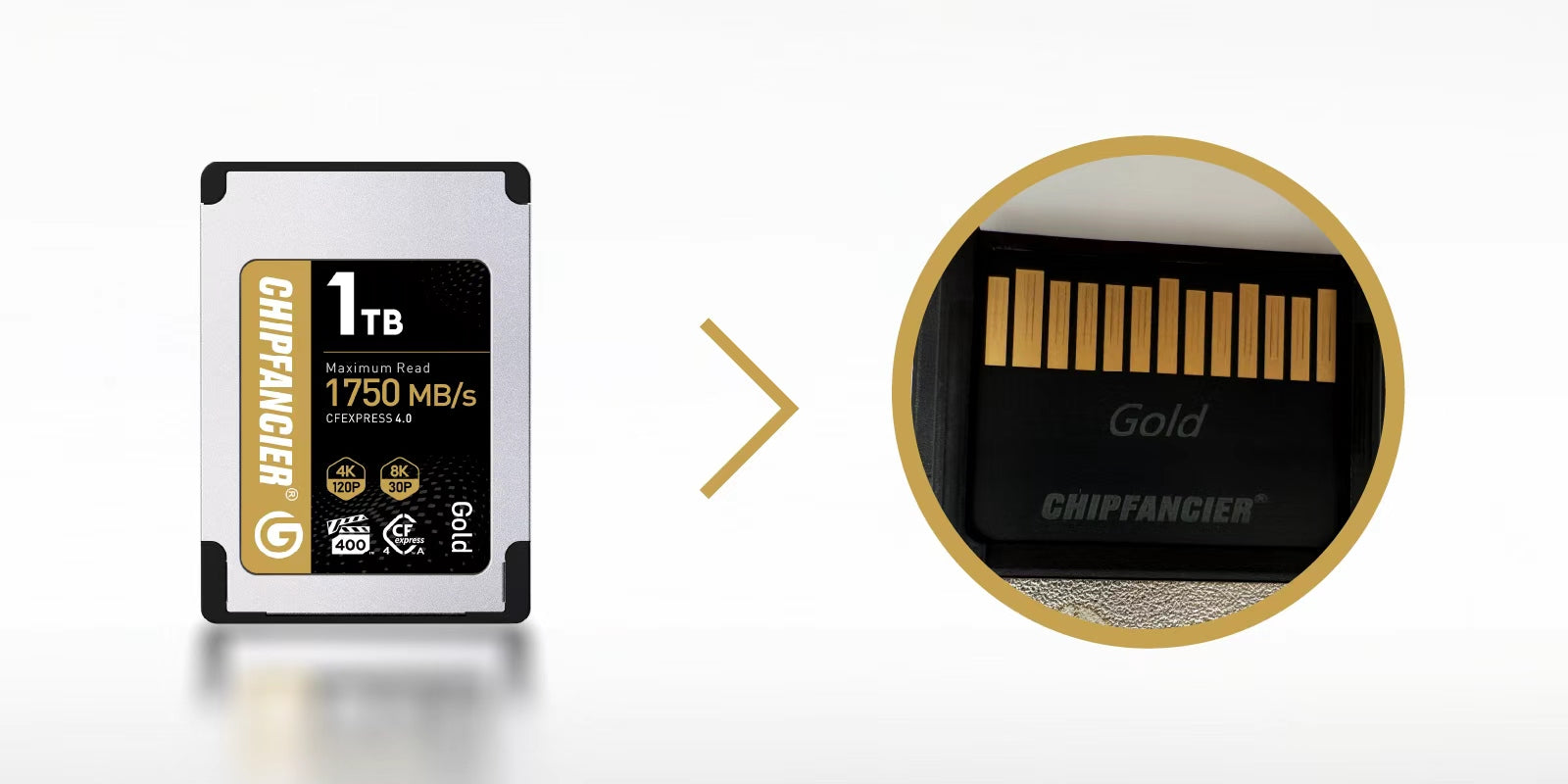
1. What is the CompactFlash Association (CFA)?
The CompactFlash Association (CFA) is an international organization founded in 1995 that develops memory card standards. It is responsible for formats such as CompactFlash, CFast, and CFexpress, ensuring compatibility and high performance for cameras and professional devices.
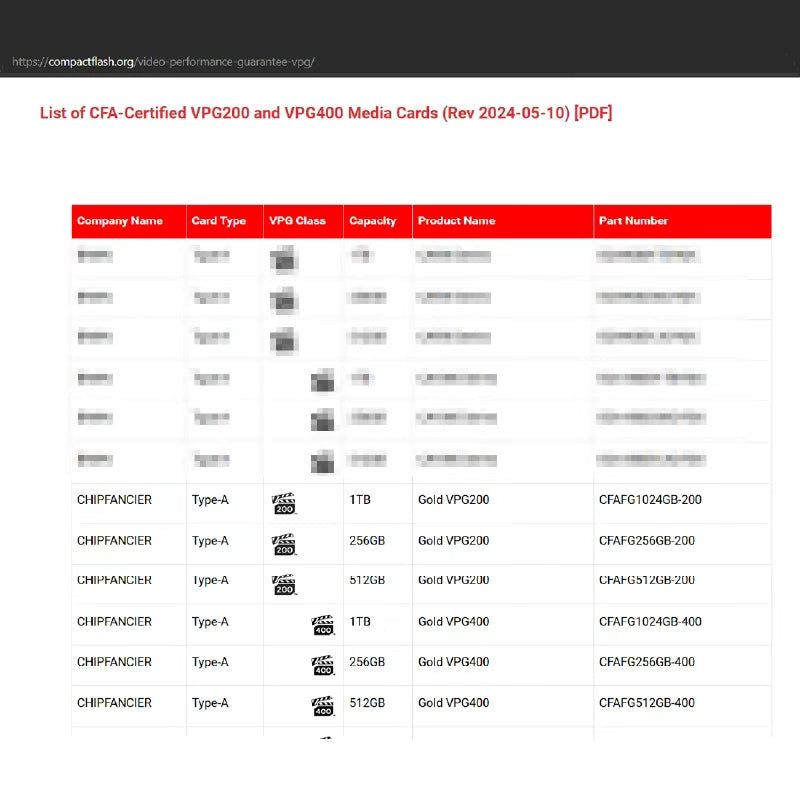
2. What is VPG400 Means?
VPG stands for Video Performance Guarantee. VPG400 is a standard defined by the CompactFlash Association, indicating that the memory card can sustain a minimum continuous write speed of 400MB/s during video recording.
This certification ensures stable performance when capturing high-bitrate footage, such as 4K RAW or 8K video, without dropped frames, stuttering, or recording interruptions. A card with VPG400 certification is highly reliable for professional filmmaking and demanding video workflows.
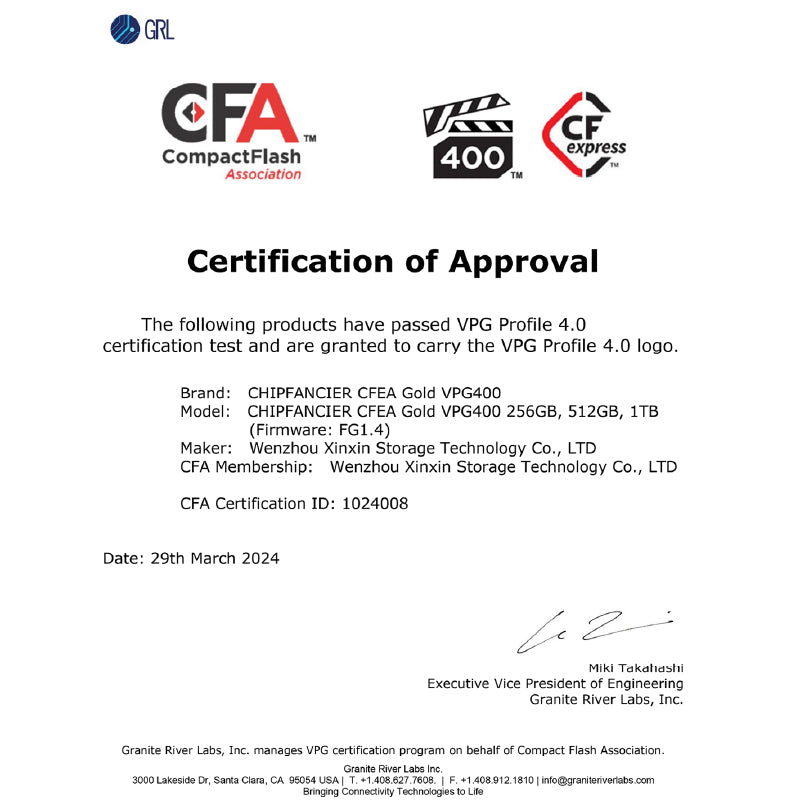
3. CFexpress 2.0 vs 4.0: The Difference
CFexpress 2.0 is based on the PCIe Gen3 interface. The most common format is Type B, which uses PCIe Gen3 ×2 lanes, giving it a maximum theoretical bandwidth of around 2 GB/s. This was a huge step up from older storage formats like XQD or SD, enabling reliable high-speed bursts of RAW photography and smooth 4K or limited 8K video recording. Many professional cameras such as the Canon EOS R5, Nikon Z9, and Sony FX6 widely adopted CFexpress 2.0 Type B for its balance of speed and stability.
CFexpress 4.0 takes things further by upgrading to the PCIe Gen4 interface.
- Type A 4.0 uses PCIe Gen4 ×1, doubling the bandwidth compared to the older Gen3 standard. This provides speeds up to about 2 GB/s, making it ideal for compact professional cameras like the Sony A1, FX3, and A7S III that rely on Type A slots.
- Type B 4.0 uses PCIe Gen4 ×2, with a theoretical bandwidth of up to 4 GB/s, unlocking blazing-fast read and write speeds. This makes it a perfect match for top-end cinema and mirrorless cameras such as the Canon EOS R5 C, Nikon Z9, and Sony FX6/FX9.
The higher performance of CFexpress 4.0 ensures smoother handling of 8K and even 12K RAW video, faster continuous shooting without buffer delays, and significantly reduced transfer times when offloading large projects to a computer.
In short, CFexpress 2.0 Type B cards were the professional standard of the past few years, while CFexpress 4.0 A and B cards represent the next generation, designed to meet the demands of modern high-resolution and high-frame-rate workflows.
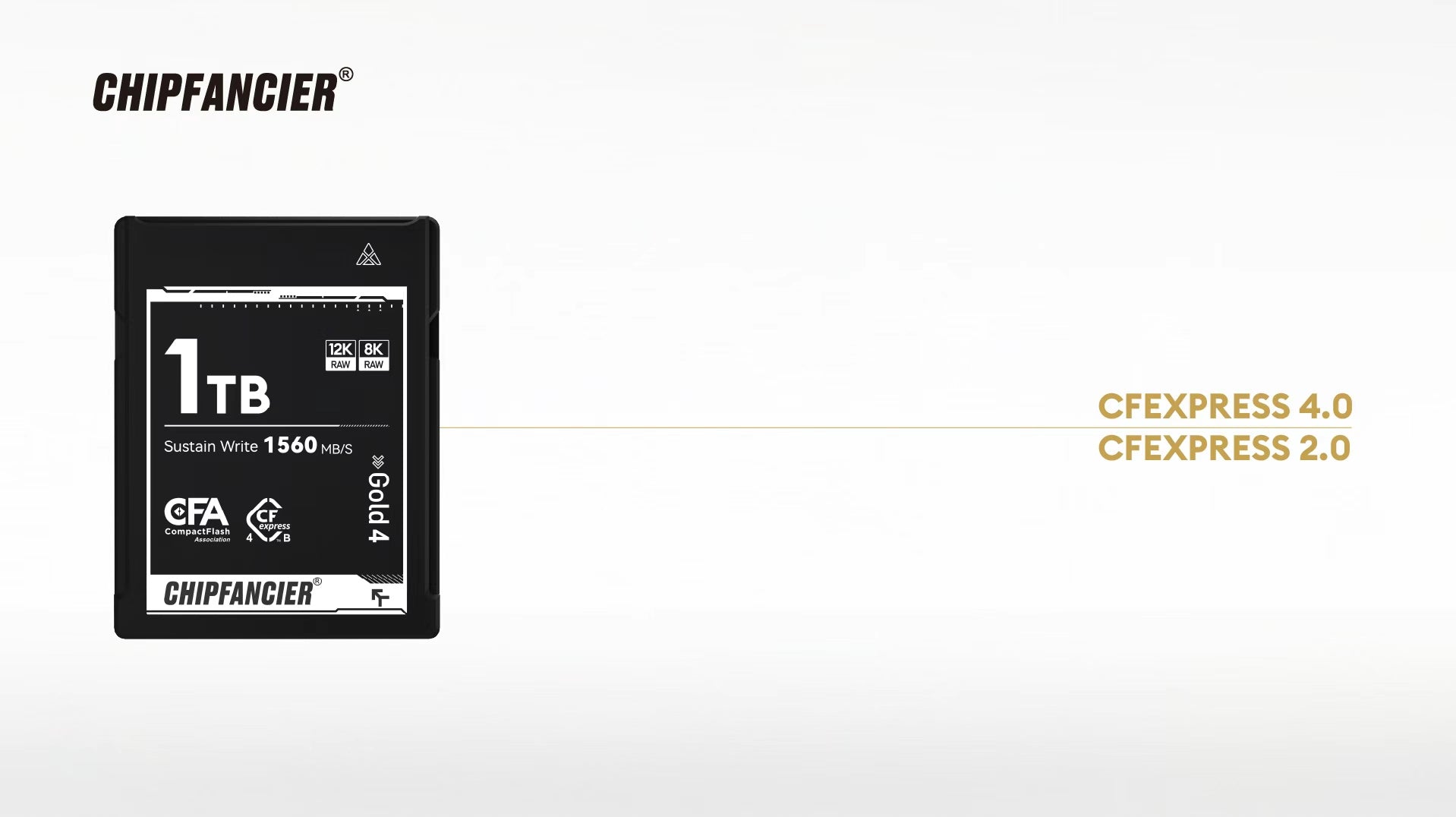
Why Understanding Memory Card Symbols Matters
Learning the meaning of memory card symbols is not just a technical detail but an important part of ensuring reliability and efficiency in your workflow. These markings provide clear information about speed, performance, and compatibility with different cameras. By understanding them, you can feel confident that your card will handle demanding tasks such as continuous RAW shooting or high-resolution video without interruption.
Knowing how to read these symbols also helps you work more efficiently, since faster and certified speeds reduce waiting times during file transfers. It allows you to make smarter purchasing decisions, choosing the right card for your specific needs instead of guessing or overspending. Finally, it prepares you for the future, as certifications like CFA 4.0 or VPG400 ensure your storage remains compatible with new standards such as 8K and beyond.
In short, understanding memory card symbols gives you peace of mind, improves your workflow, and helps you focus entirely on your creativity.
Understanding Memory Card Symbols
Understanding memory card symbols such as CFA 4.0, CFB 4.0, and CFB 2.0, along with the design of the gold connectors, is essential for selecting the right storage solution. These gold connectors, often referred to as the “fingers” of the card, are not just a physical interface but a critical part of ensuring stable data transfer and long-term reliability. Each symbol and connector standard represents performance levels, compatibility ranges, and durability that directly affect how smoothly your camera can handle demanding tasks. By paying attention to these details and choosing the proper card, you can maximize your camera’s potential, safeguard your data, and maintain an efficient workflow for both professional and everyday use.
